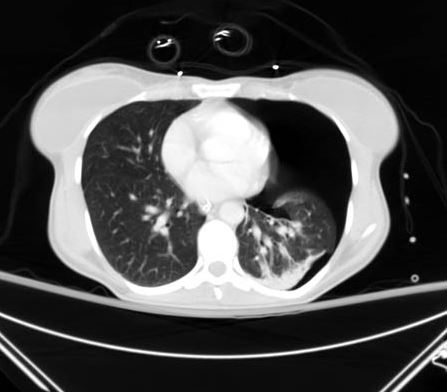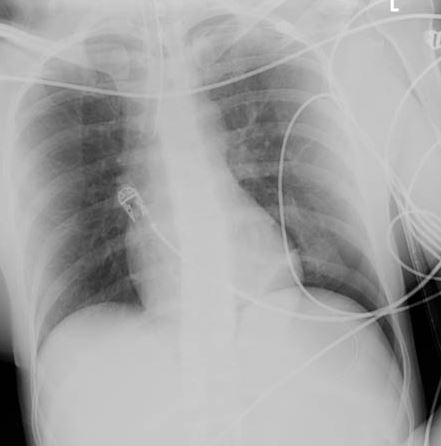Epidemiology
As most fractures are associated with high-energy impact, their incidence is directly related to the overall numbers of blunt thoracic trauma in a particular region. About 10% to 55% of those sustaining blunt thoracic trauma sustain a rib fracture, with an increase in incidence due to increasing age.[1] Among infants younger than 12 months presenting with rib fractures, as many as 82% sustained these injuries non-accidentally (i.e., through physical abuse).[2][3]
As age increases, the absolute risk of sustaining a fragility fracture is inversely proportional to the patient's bone mineral density, with about 27% of these fractures occurring in the ribs.[4] Additionally, the number of older adults with rib fractures associated with falls is expected to increase as the overall age of the population continues to rise.[5] Patients older than 65 years have an increased risk of morbidity and mortality in the setting of multiple rib fractures compared with younger people.[6][7]
Pneumothorax occurs in about 14% to 37% of rib fractures, haemopneumothorax in 20% to 27%, pulmonary contusions in 17%, and a flail chest in up to 6%.[8][9][10]
[Figure caption and citation for the preceding image starts]: CT scan showing large left-sided pneumothoraxFrom the collection of Dr Paul Novakovich; used with permission [Citation ends]. [Figure caption and citation for the preceding image starts]: CXR depicting the same pneumothorax as shown on CTFrom the collection of Dr Paul Novakovich; used with permission [Citation ends].
[Figure caption and citation for the preceding image starts]: CXR depicting the same pneumothorax as shown on CTFrom the collection of Dr Paul Novakovich; used with permission [Citation ends].
Risk factors
Cardiopulmonary resuscitation (CPR) in adults has been implicated as a cause of rib and sternal fractures.[12][13] In patients receiving external cardiac massage as a form of CPR, rib fractures were caused in 77% of males and 85% of females.[28] However, the incidence of rib fractures in children following CPR is estimated to be <2%.[12]
The presence of rib fractures without associated trauma has the highest probability of being attributed to non-accidental injury when compared with all other fractures.[14] In a study of infants <12 months old presenting with rib fracture, 82% sustained these fractures as a result of non-accidental injury.[2][3]
As age increases, the absolute risk of sustaining a fragility fracture is inversely proportional to the bone mineral density of the patient, with about 27% of these fractures occurring in the ribs.[4] A prior history of hip fracture or other appendicular skeletal injury after the age of 50 years greatly increases a patient's risk for subsequent rib fracture.[29]
Patients >65 years old have an increased risk of morbidity and mortality in the setting of sustaining multiple rib fractures when compared with a younger population.[6][7] In one study examining the association of rib fractures with the risk of fatality following a car crash, over 55% of patients >60 years who died of a chest injury sustained only rib fractures.[30]
Use of this content is subject to our disclaimer